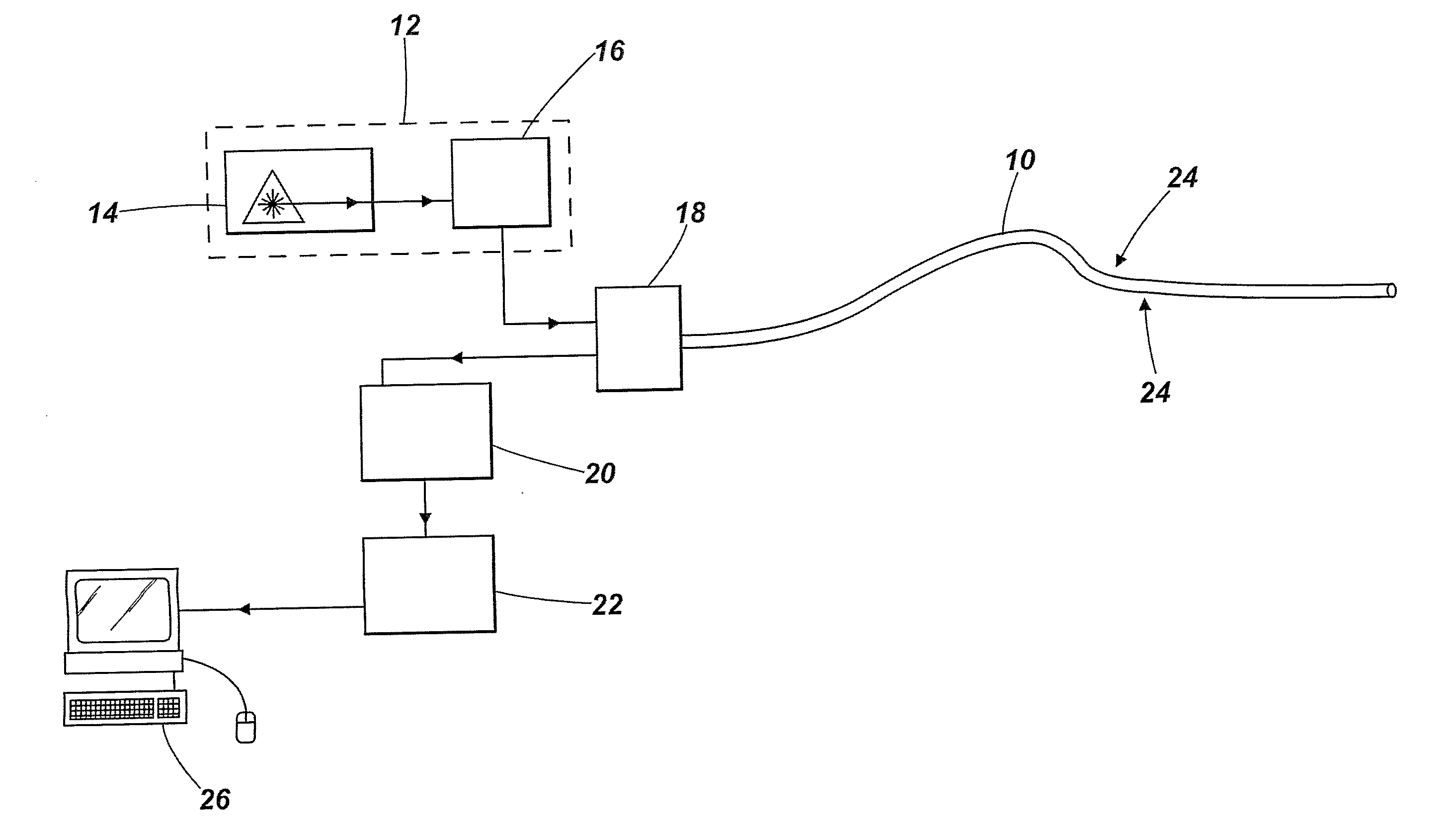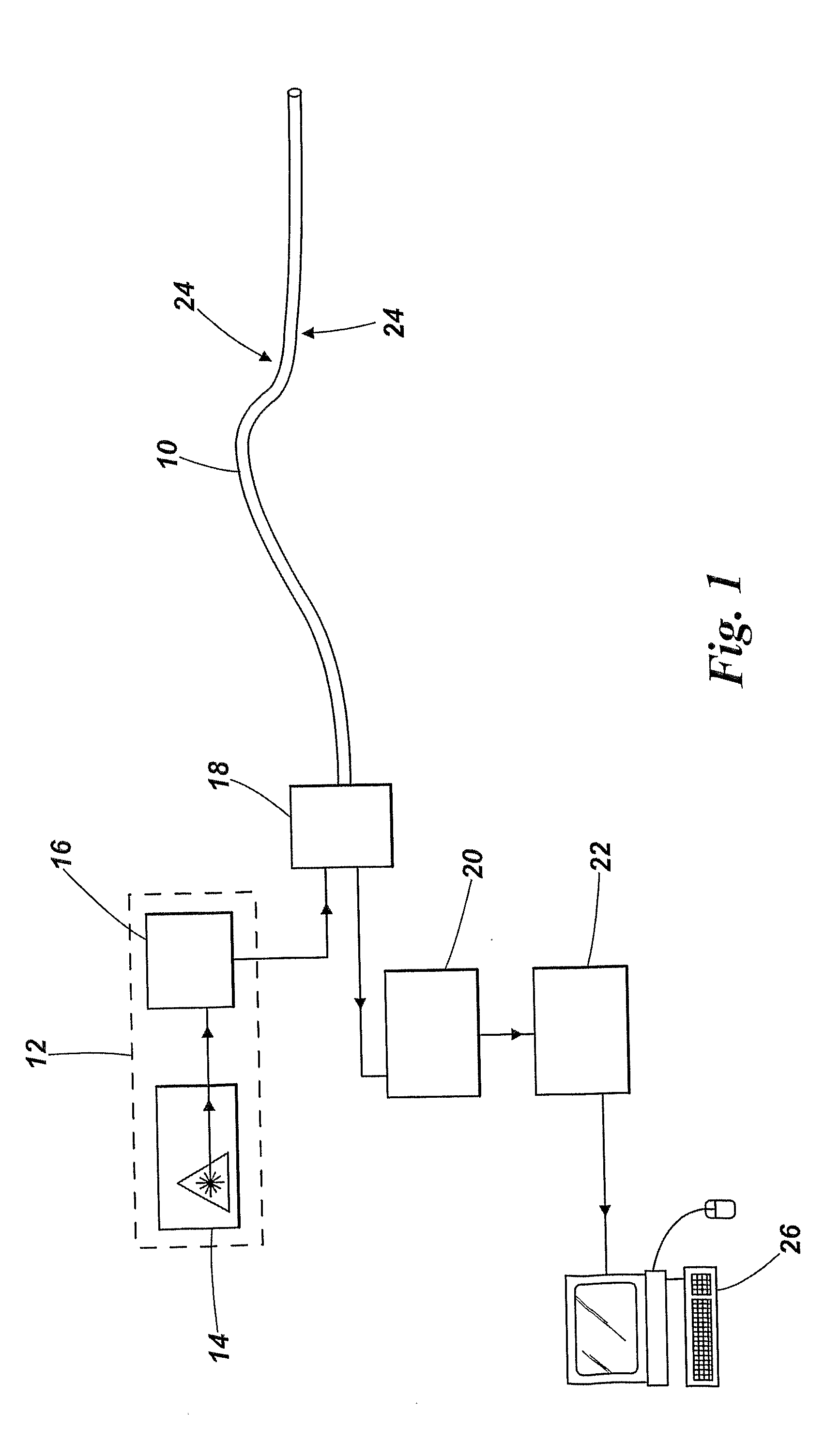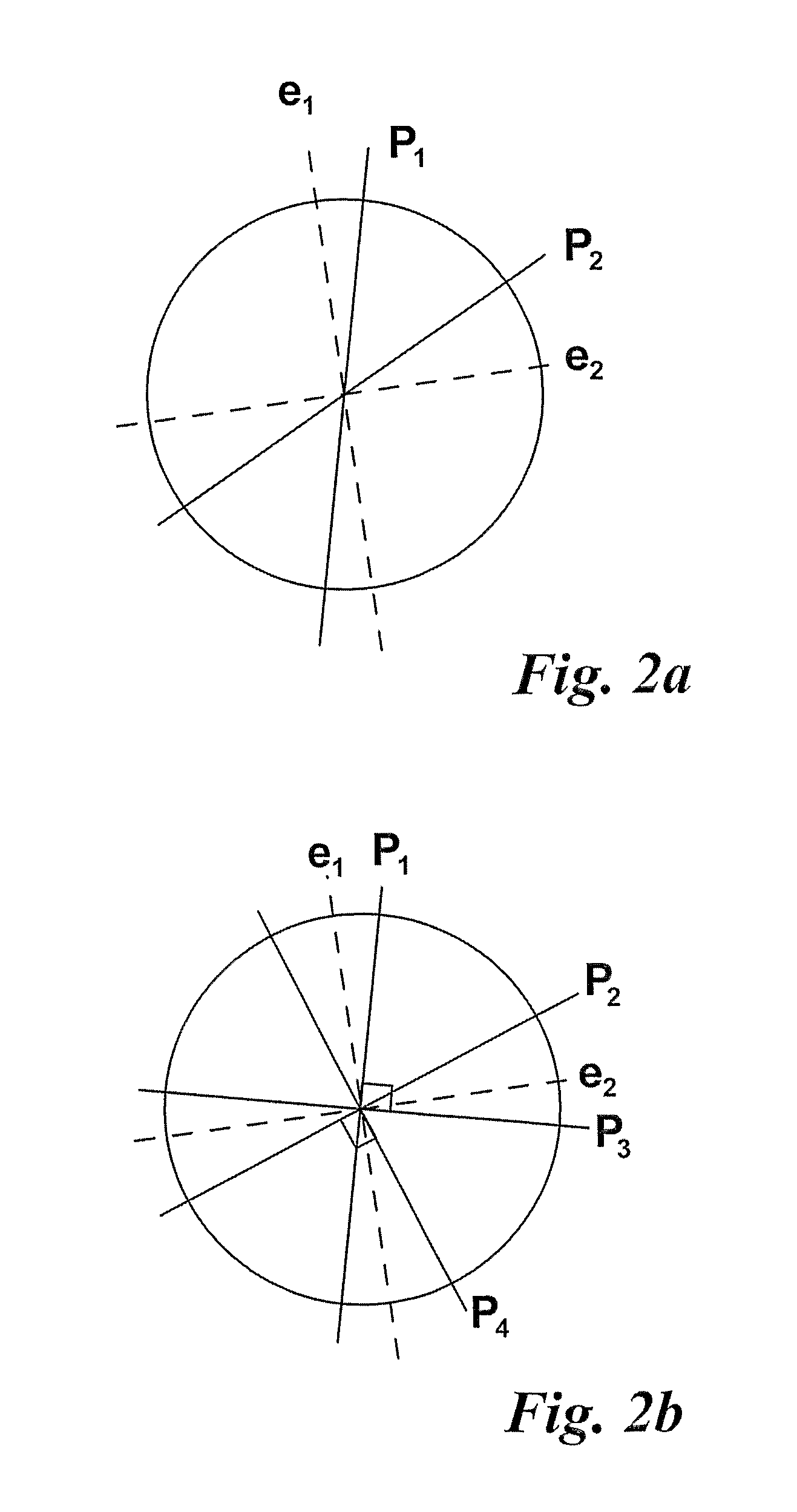Distributed Optical Fibre Sensor
a technology of optical fibre and diffusion optical fiber, applied in the direction of converting sensor output, measurement devices, instruments, etc., can solve the problems high attenuation, and difficult manufacturing of high birefringence fibres, so as to reduce signal fading
- Summary
- Abstract
- Description
- Claims
- Application Information
AI Technical Summary
Benefits of technology
Problems solved by technology
Method used
Image
Examples
Embodiment Construction
[0035]Referring now to FIG. 1 there is shown a distributed optical fibre sensor embodying the invention. A sensor fibre 10 is deployed in an environment to be sensed, such as along a building structure or down a well bore. The sensor fibre is structured and / or deployed such that it has a birefringence which is responsive to an environmental influence 24. A light source 12 generates pulses of probe light for launching into the sensor fibre, and includes a laser 14 which delivers a laser beam to source optics 16. The source optics 16 conditions the pulses into the desired form and passes them to a fibre coupling 18 for delivery into the sensor fibre.
[0036]As each pulse of probe light travels along the fibre, some of the light is Rayleigh-backscattered from the fibre material, structure and defects. The backscattered light arrives back at the fibre coupling 18 after an interval based on the return optical path length travelled, and is passed to a detector 20 where properties of the bac...
PUM
 Login to View More
Login to View More Abstract
Description
Claims
Application Information
 Login to View More
Login to View More - R&D
- Intellectual Property
- Life Sciences
- Materials
- Tech Scout
- Unparalleled Data Quality
- Higher Quality Content
- 60% Fewer Hallucinations
Browse by: Latest US Patents, China's latest patents, Technical Efficacy Thesaurus, Application Domain, Technology Topic, Popular Technical Reports.
© 2025 PatSnap. All rights reserved.Legal|Privacy policy|Modern Slavery Act Transparency Statement|Sitemap|About US| Contact US: help@patsnap.com



